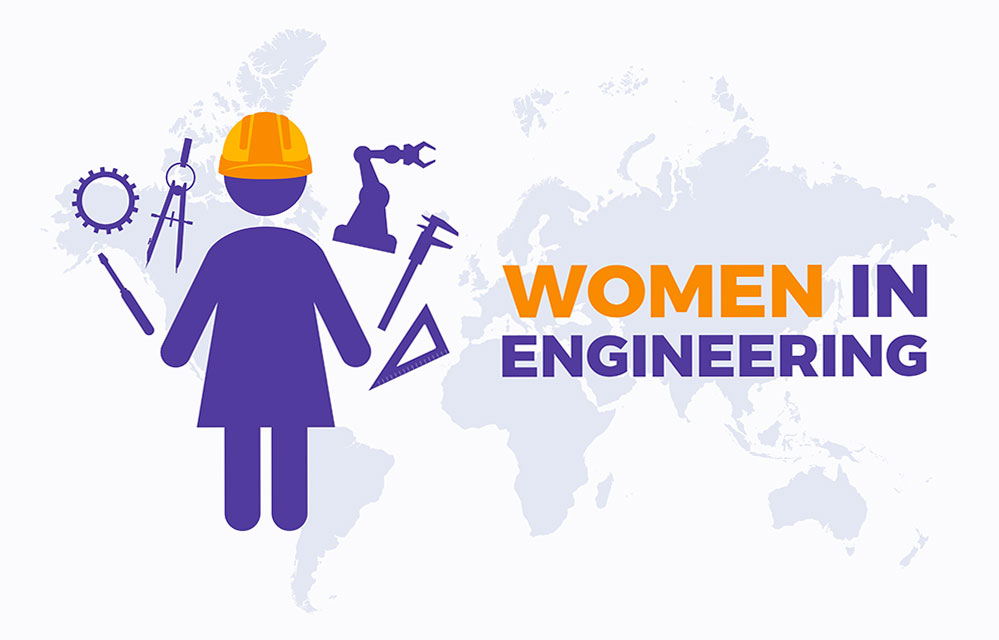In the traditionally male-dominated engineering world, several women have defied stereotypes and made groundbreaking contributions to the field. Through their innovative spirit, expertise, and determination, they have been instrumental in the conception and execution of engineering advancements. This article highlights exemplary women who have left an indelible mark on the engineering landscape.
Emily Roebling (1843-1903)
Emily Roebling was the first woman field engineer and a key contributor to one of the most iconic structures in the United States – the Brooklyn Bridge. When her husband, Washington Roebling, the chief engineer, fell ill during the bridge’s construction, Emily took over the project management. She studied higher mathematics, bridge specifications, materials, and cable construction. Her relentless commitment to the project was instrumental in overcoming various challenges, ensuring the bridge’s successful completion in 1883. The Brooklyn Bridge remains a testimony to her engineering acumen and dedication.
Lillian Moller Gilbreth (1878-1972)
An American psychologist and industrial engineer, Lillian Moller Gilbreth was one of the first female engineers to earn a Ph.D. She is considered to be the “First Lady of Engineering” and was one of the first efficiency experts contributing to industrial management and ergonomics. Her work alongside her husband, Frank Bunker Gilbreth, in time and motion studies laid the foundation for modern industrial engineering.
Edith Clarke (1883-1959)
Edith Clarke was a pioneering electrical engineer in the United States. She was the first woman to be employed as a professional electrical engineer and the first female professor of electrical engineering at the University of Texas at Austin. Clarke was known for her work in power systems and became the first female Fellow of the American Institute of Electrical Engineers.
Elsie Eaves (1898-1983)
As a pioneer for women in the construction industry, Elsie Eaves broke barriers and made an indelible impact on engineering. She was the first woman to be elected as an American Society of Civil Engineers (ASCE) associate member in 1927. Elsie played a vital role in streamlining construction practices by publishing monthly construction cost data in 1931. Through her innovation, she aided engineers and constructors in tracking trends and making informed financial decisions, transforming the construction industry for the better.
Gertrude Blanch (1897-1996)
An accomplished mathematician, Gertrude Blanch led a team in computing for the Manhattan Project and contributed to numerical analysis applied to electrical engineering problems. Her work with electrical transmission theory and applying mathematics to various engineering problems was pioneering.
Hedy Lamarr (1914-2000)
Although primarily renowned as a Hollywood actress, Hedy Lamarr was also a brilliant inventor and significantly contributed to the engineering world. During World War II, she co-invented a frequency-hopping spread spectrum technology with composer George Antheil, which aimed to make radio-controlled torpedoes unjammable by the enemy. While it wasn’t adopted immediately by the military, this technology later laid the foundation for developing Wi-Fi, Bluetooth, and GPS. Her contribution to communications engineering is a testament to her inventiveness and far-reaching vision.
Mary Jackson (1921-2005)
Mary Jackson was an American mathematician and aerospace engineer who played a pivotal role in the success of the United States space program. She was the first African-American female engineer at NASA. Jackson’s story and those of Katherine Johnson and Dorothy Vaughan were popularized in the 2016 film “Hidden Figures,” which depicted their significant contributions to launching the first Americans into space.
Ying Sun (born 1939)
Dr. Ying Sun is a noted electrical engineer who contributed significantly to the development of micro-electro-mechanical systems (MEMS) and semiconductor technology. She is an IEEE Fellow and has been recognized for her research in electro-thermal mechanical simulation, and its application in IC interconnect reliability.
Mae Jemison (born 1956)
Dr. Mae Jemison is an American engineer, physician, and former NASA astronaut. She became the first African American woman to travel in space aboard the Space Shuttle Endeavour in 1992. Before her career as an astronaut, Jemison had a background in chemical engineering and medicine. She has been a proponent for science education and getting minorities involved in science-related fields.
Kalpana Chawla (1962-2003)
Kalpana Chawla, an Indian-American astronaut, and engineer, significantly contributed to aerospace engineering. With a Ph.D. in aerospace engineering, she worked on projects involving the optimization of airflows around aircraft and computational fluid dynamics. In 1994, she was selected as an astronaut candidate by NASA and went on to fly on Space Shuttle Columbia. She made significant contributions to various space missions, and her research has been vital to the developments in space technology. Though her life was tragically cut short in the Space Shuttle Columbia disaster in 2003, her legacy as an engineer and astronaut continues to inspire.
Dr. Andrea Goldsmith (born 1964)
Dr. Andrea Goldsmith is a renowned wireless communications engineer and entrepreneur. She is a Dean of the School of Engineering and Applied Science at Princeton University and was previously a professor at Stanford University. Her research has significantly influenced modern wireless communications, particularly in the design of MIMO and cognitive radio systems. The IEEE has recognized her and has received several prestigious awards for her work.
Aicha Evans (born 1969)
Aicha Evans is an electrical engineer and CEO of Zoox, a self-driving car company acquired by Amazon. She was previously Senior Vice President and Chief Strategy Officer at Intel Corporation. At Intel, she made notable contributions to developing various wireless technologies. She is a leading figure in autonomous vehicle technology and a role model for women in tech.
Paving the Way
These women have blazed trails in various engineering fields, from construction to aerospace, telecommunications to software development. Through their innovations and unwavering commitment, they have contributed to engineering advancements and paved the way for future generations of female engineers. Their achievements underscore the significance of diversity in engineering and serve as a reminder that ingenuity knows no gender.




